
Data-driven HR
Struggling to turn HR data into stories that impress leadership? Our content hub has the answers. 📈
Explore our content hubAnalysing HR data: Everything HR teams need to know
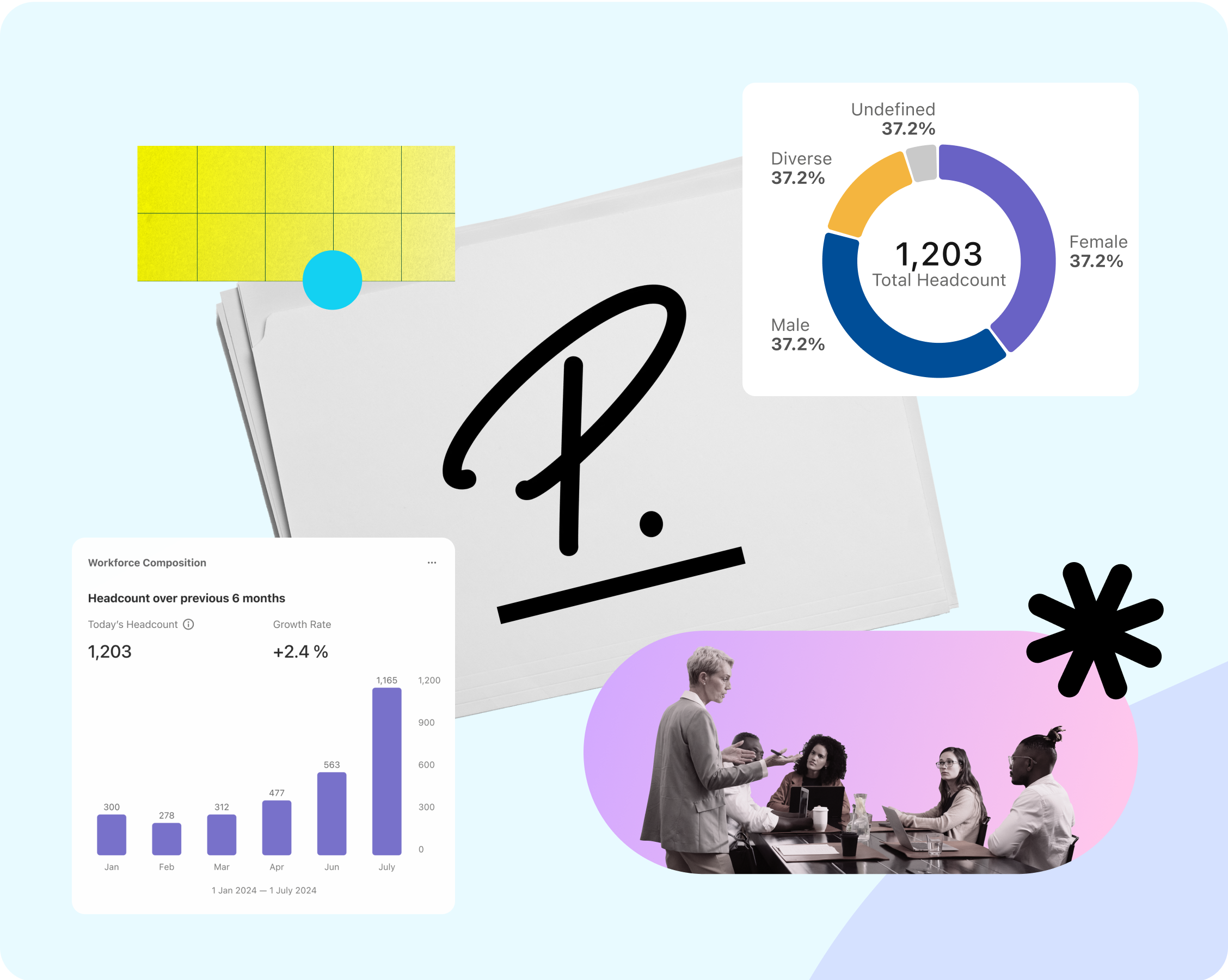
Analysing HR data is somewhere between a science and an art. Do you want to truly understand your workforce and make strategic, data-driven decisions? Read on for our full guide to analysing your people data, where we’ll take you through everything you need to know to drive performance and deliver more value to your organisation.
Don’t have a people strategy? Don’t worry, download our free guide today.Contents
What is HR analytics?
HR analytics (or people analytics) is the process of collecting, analysing and reporting HR data. Effective analysis of your HR data allows you to measure the impact of various HR initiatives and make stronger, data-led decisions.
The purpose of HR analytics and reporting is to give organisations the key insights they need to truly understand their workforce. When it’s done right, it can drive business performance and help HR to become a true strategic partner in any organisation.
The importance of HR analytics in today’s workplace
Increasingly, HR is seen not just as an operational function, but as a strategic one. But for strategic HR to work, HR teams need access to reliable data — and the ability to interpret and understand it.
They can then use their findings to create a business case for specific HR interventions, and make improvements to the company’s operations. This puts HR in a key strategic position within the organisation.
We also can’t ignore the rapid changes to the way we work that we’ve seen over the past few years. Today, it’s more important than ever to make well-founded, data-driven decisions — which means that analysing HR data is more necessary than ever before.
What types of HR data are there?
Almost everything HR teams do generates data — and much of it could give you valuable insights into your workforce if you took the time to organise and analyse it.
Here are a few different types of HR data that you could be analysing.
Employee engagement data
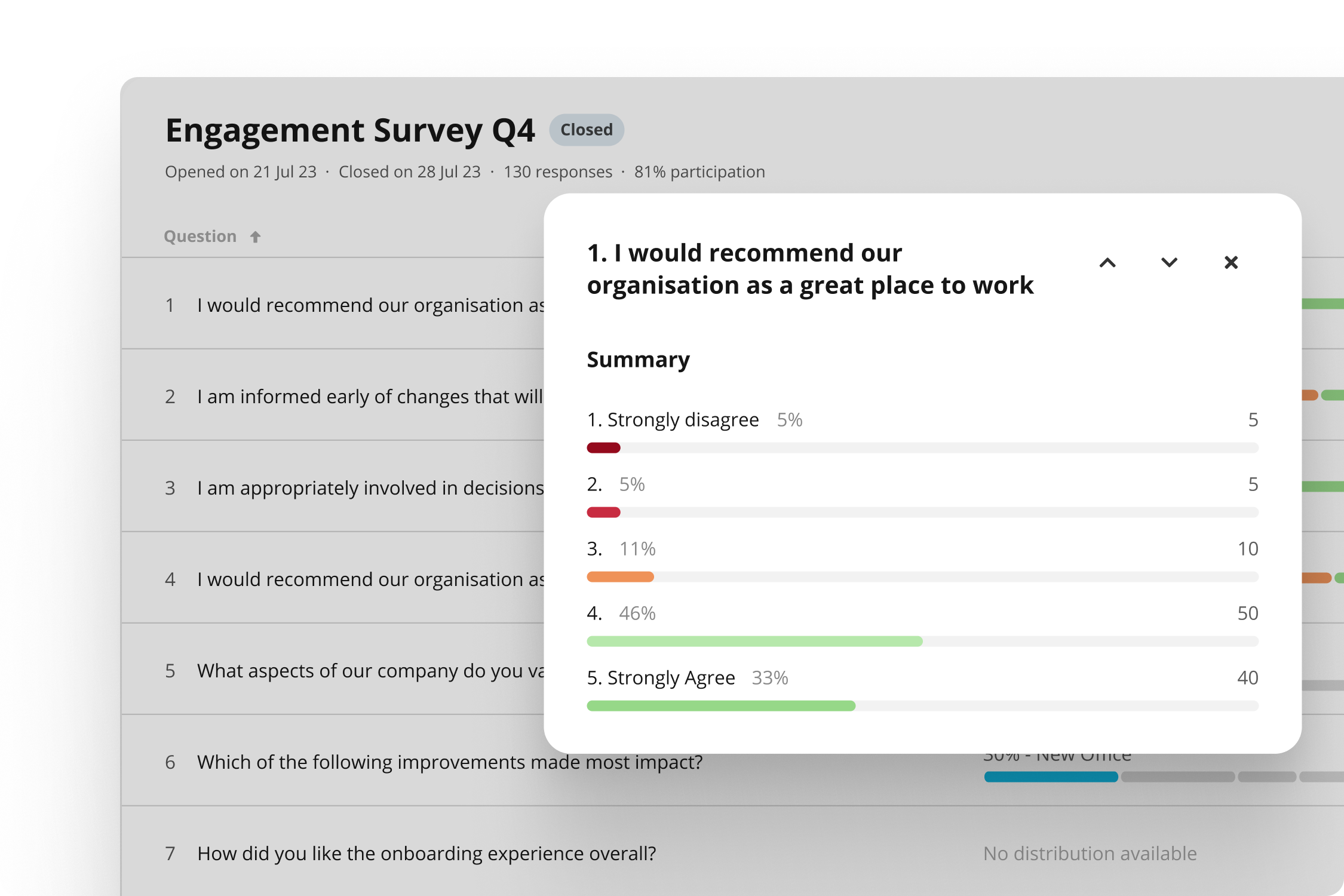
A drop in employee engagement could indicate that something is going wrong — but if you’re not tracking it, you might not notice until it’s too late.
Sending out regular employee engagement surveys ensures you understand your workforce’s engagement levels as they change over time. Keeping an eye on your survey response rate is also a good idea, since a lack of responses could in itself be a signal of disengagement.
You should also look out for potential clusters of disengaged employees within the same team, location or job function, as this could indicate a localised problem.
Of course, for a true measure of engagement, you shouldn’t rely entirely on self-reported data. Here are a few other metrics you could track:
Your attrition rate
Your rate of absenteeism
Internal email engagement
Employee productivity ratings
Performance data
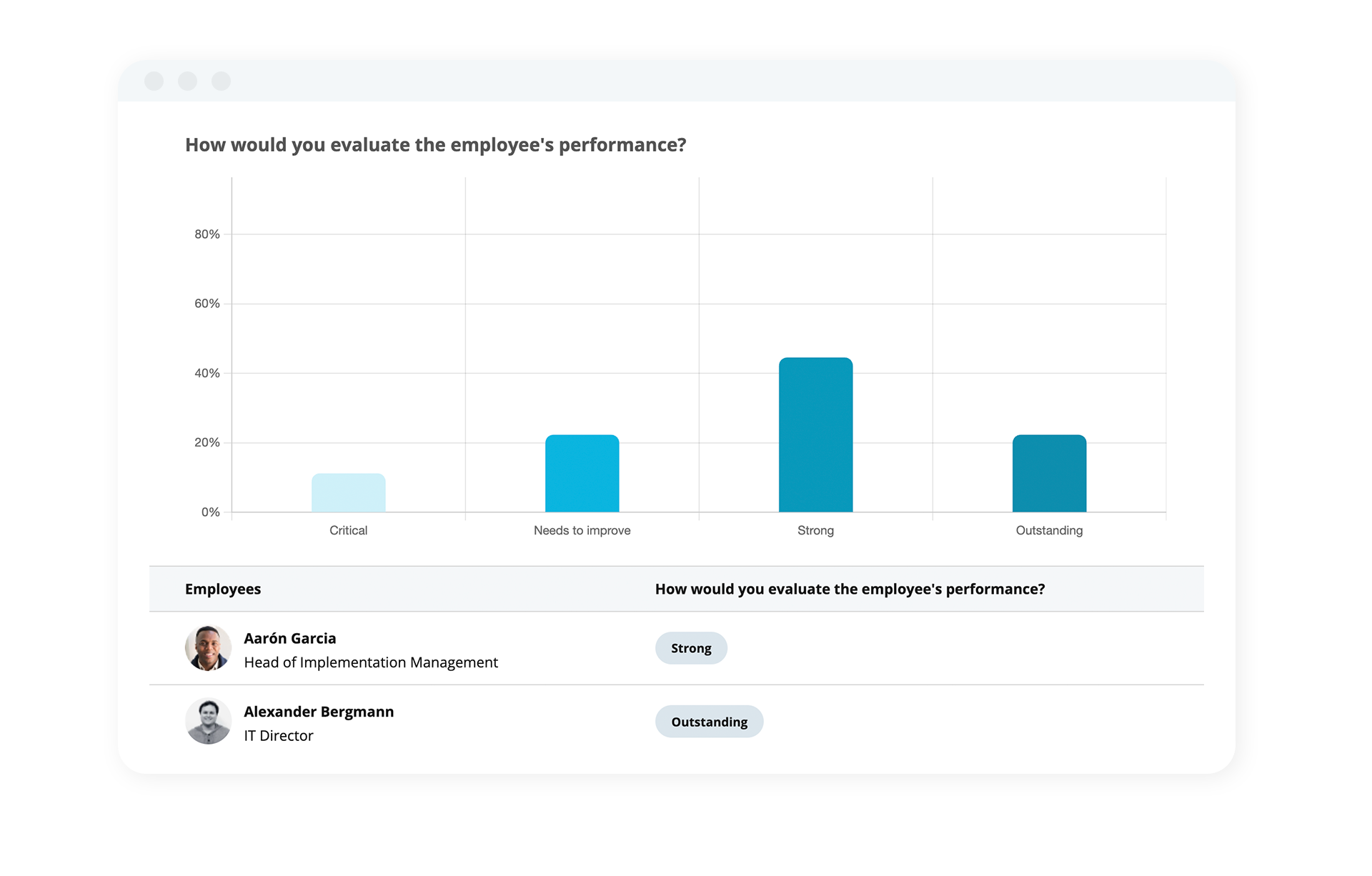
Tracking key performance indicators (KPIs) across your organisation can help you spot any drops in performance. And the more data you have, the more useful insights you can draw from it. For example, you might find that one particular team is having problems with performance, even if your organisation overall is meeting its goals.
Performance reviews are another key source of performance data. To make this data easier to track and compare, you should make sure your performance review template includes questions with quantifiable answers. For example, you could ask managers to rate certain aspects of the employee’s performance on a scale of 1–10, then track how these ratings change over time.
Enable your line managers to host great performance conversations

Download our performance review template to help your teams design, structure and run performance reviews that truly make the grade. Grab your copy for free right now.
Find your copy hereRecruitment data
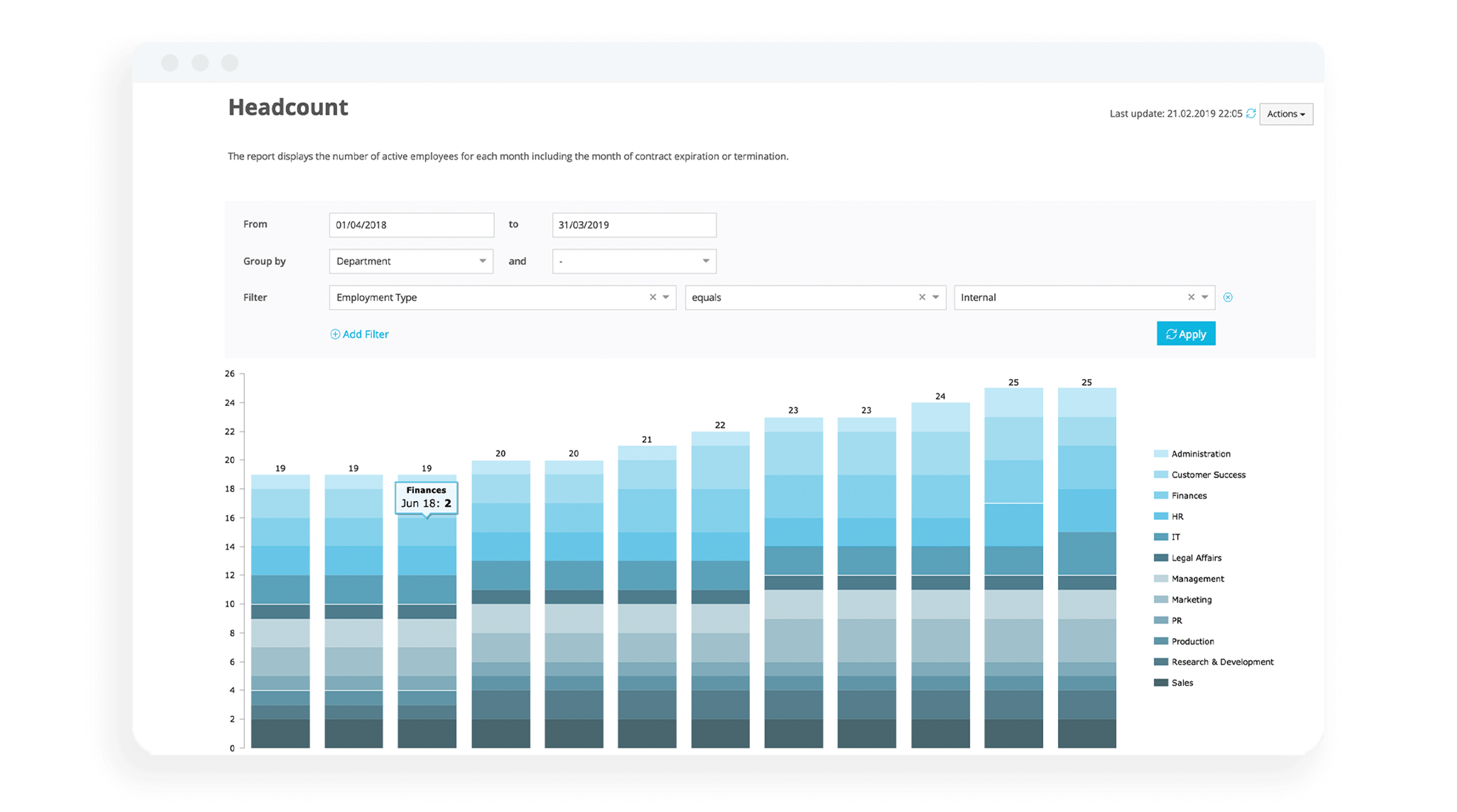
Collecting and analysing recruitment data can help you to hone your processes to make them as efficient and cost-effective as possible. And the good news is that if you’re using an applicant tracking system (ATS) for recruitment, you’re probably already collecting a lot of data.
Examples of recruiting metrics you could track include:
Cost-per-hire (CPH)
Time to fill
Channel effectiveness
Candidate conversion rate
Quality of hire
Four steps in effectively analysing HR data
Want to start analysing your HR data? Below, we’ve broken the process down into four steps to help you understand how it works.
1. Data collection
As we mentioned, you’re probably already collecting a lot of data. To ensure this data is useful, you should make sure it’s accessible to anyone who needs to see it, and that it can be imported into a reporting system.
There are a number of different places where you might source HR data, including:
Your HRIS software
Your ATS
Any learning and development platforms you use
Wellbeing and wellness apps
Records from exit interviews
Your customer relationship management (CRM) software
Your finance or accounting software
2. Data cleaning
If you want to get useful insights from your HR data, you need to make sure it provides an accurate picture of your organisation. But data often includes errors and outliers that can skew your analysis and lead you to draw the wrong conclusions.
Some examples of ‘dirty’ data that needs to be cleaned up before analysis include:
Missing data
Inconsistent data
Duplicate data
Biassed data
Outdated data
The processes you use to collect the data in the first place could be contributing to some of these problems. For example, a performance review should be an accurate, objective rating of an employee’s performance. But in reality, they’re often coloured by the manager’s personal feelings about the employee in question.
Collecting data from multiple different systems can also lead to inconsistencies and duplicate records, which could muddy your analysis. Before you move on to analysing your data, you’ll need to take the time to clean up your records by deleting or merging duplicates, removing any obvious outliers and ensuring that the data you’re looking at is up to date.
3. Data analysis
Next, you need to measure and analyse the data you’ve collected. For this to be effective, a one-time snapshot of your workforce isn’t enough. Instead, it should be a continuous process of measurement and comparison that provides insight into the way certain metrics have changed over time.
You’ll also need a baseline to measure your findings against. For example, you can’t determine whether your level of absenteeism is acceptable if you don’t know what the standard is. Depending on the metric you’re tracking, you might choose to study industry benchmarks to see how you compare to other organisations.
4. Data interpretation and reporting
Analysing your HR data is pointless if you can’t draw any useful insights from your analysis — which is why interpreting and reporting on your findings is the most important stage in the process.
It involves reviewing your results and identifying trends and patterns that could have an impact on your organisation. Importantly, the next step is to transform the patterns you’ve found into actionable insights. This might mean recommending that a particular HR initiative be implemented or suggesting improvements to the processes you already have in place.
HR reporting software can help you transform your findings into visual representations, making them easier to understand.
The role of technology in analysing HR data
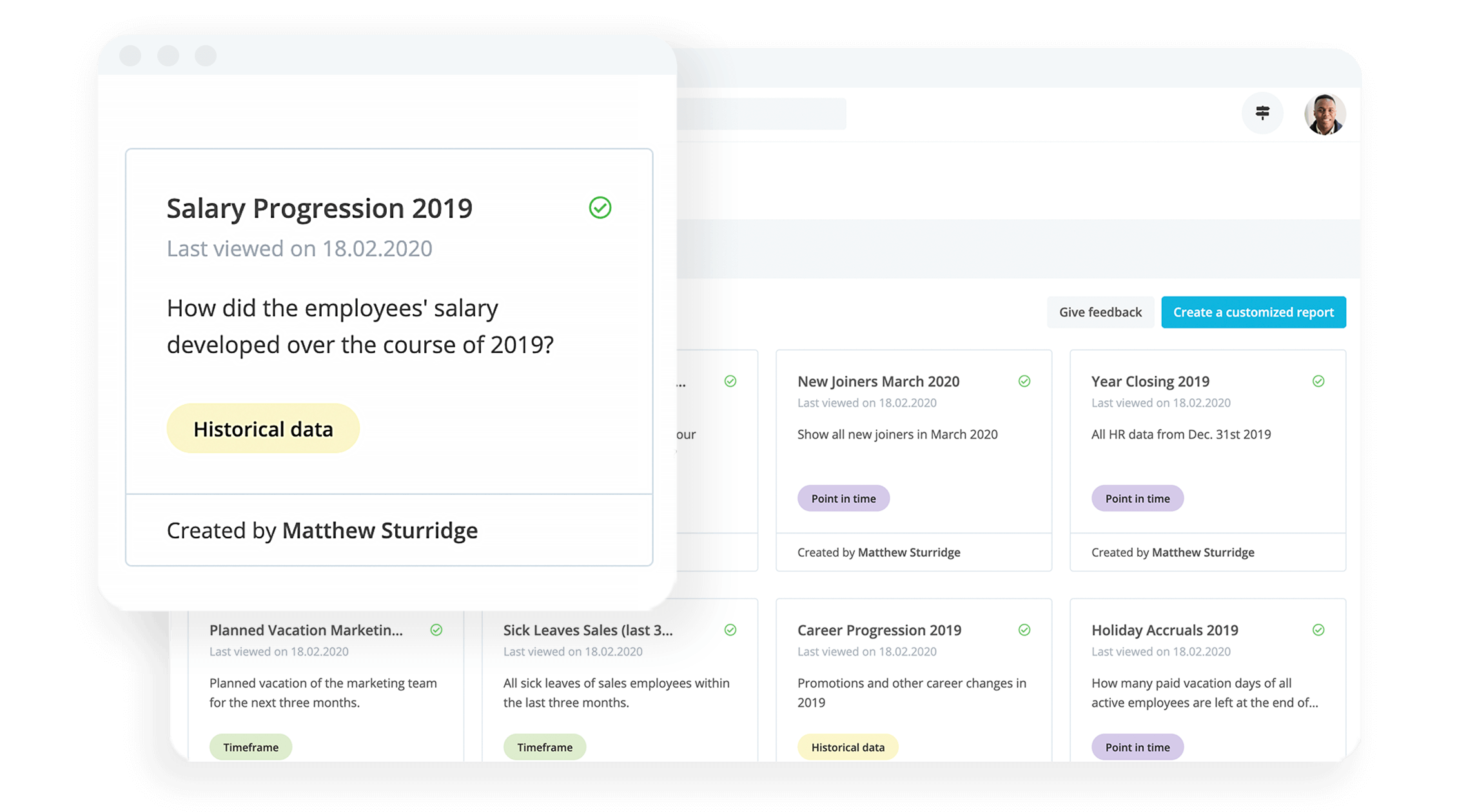
Technology plays a role in almost every stage of the data analysis process, including collecting, cleaning and sorting the data, and even drawing out key insights from your results.
There are many software solutions that combine multiple functions, including HR data analysis — like Personio, for example. You can use these tools to collect HR data, and then analyse it using in-built data analysis capabilities.
One key advantage of these tools is that they can present you with the information you need in a way that’s easy to understand at a glance, like a graph or a chart showing how certain metrics have changed over time.
The importance of data security
One of the main functions of a company’s HR department is to collect and store sensitive information about its employees. And there need to be robust checks and balances in place to ensure that data is kept safe.
For example, HR teams should check out the security credentials of any company they’re considering licencing a piece of software from. They should also be careful about who they allow to access certain data. The use of personal laptops and other devices should also be handled carefully to ensure there’s no risk of data breach.
More data-driven HR is possible with Personio

Salary progression, headcount, sick leave and more, Personio's analytics and reporting function makes it easier to make strategic decisions based on data. Learn a bit more about how it works by clicking below.
Show me reporting with PersonioHR analytics pitfalls to avoid
Here are some common pitfalls to be aware of if you’re new to analysing HR data.
Overcomplicating data analysis
If you jump straight into analysing data without any real objectives, you’ll end up wasting time. Think carefully about what you want to find out through your analysis, and then focus your efforts on those specific areas.
Ignoring crucial context
It’s important to consider the context surrounding any data you collect. For example, many organisations saw dramatic drops in employee engagement and satisfaction during the first COVID lockdowns in 2020 — which was only to be expected given the circumstances. If you looked at that data without considering this context, you might assume that those companies had big internal problems that needed to be fixed.
Allowing data silos to form
Most companies use a variety of different apps and platforms to manage their operations. And when these tools don’t integrate well with each other, this can create data silos that are inaccessible to the rest of the organisation. This is especially true when companies operate in several different countries and use different systems to gather data in each one.
The only way to avoid this is to ensure that the tools you choose come with a strong suite of integrations. That way, you’ll be able to compare data even when it comes from different sources.
Making HR a strategic partner through effective data analytics
When it’s done right, data analytics gives you access to key insights that can help drive decision-making across your organisation. This helps organisations to make better decisions and ultimately boost their bottom line — all thanks to HR.
Plus, HR analytics can demonstrate the ROI of certain HR initiatives and even the HR department itself. By tracking and analysing the right data, HR teams can better determine the right solutions to develop and deploy, increasing the value they bring to the organisation.
Get quick and accurate data insights with Personio
With strong data analytics, HR can move away from the operational function it has traditionally fulfilled, and become a strategic partner in the organisation. But analysing HR data can also be a lot of work.
That’s why you need a powerful, easy-to-use tool that does the hard part for you. Personio gathers personnel data and stores it in an easily accessible location for quick and accurate data analysis. You can view auto-generated HR reports at a glance, or sort and filter your data as needed to evaluate the KPIs that matter to you.
Want to find out more? Book your free demo to see what else Personio can do.
